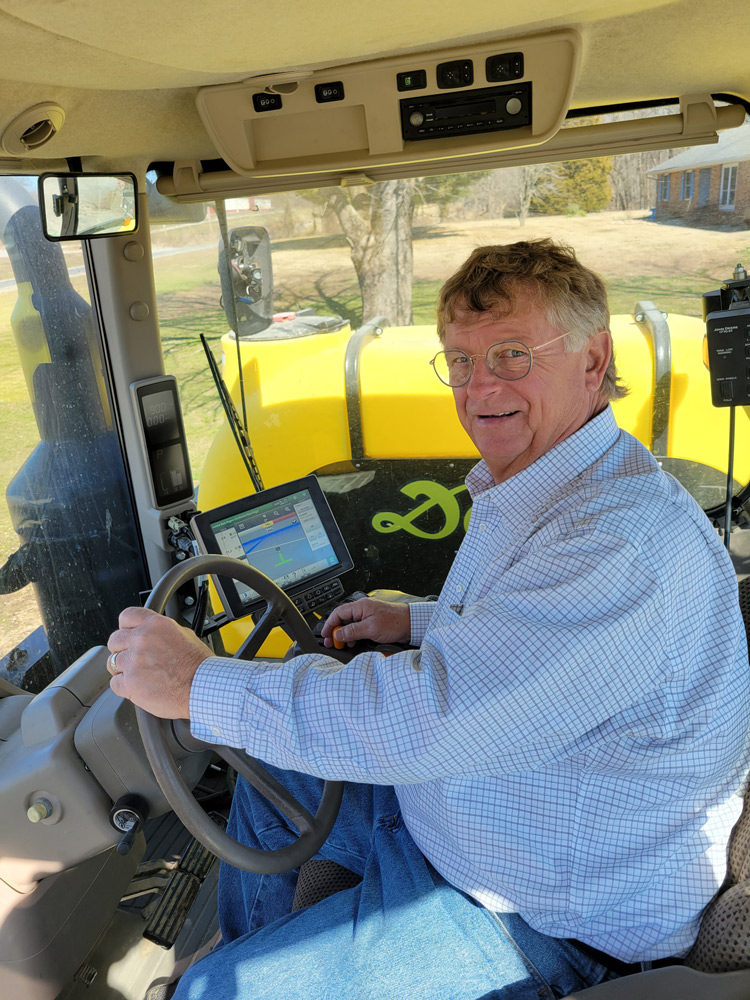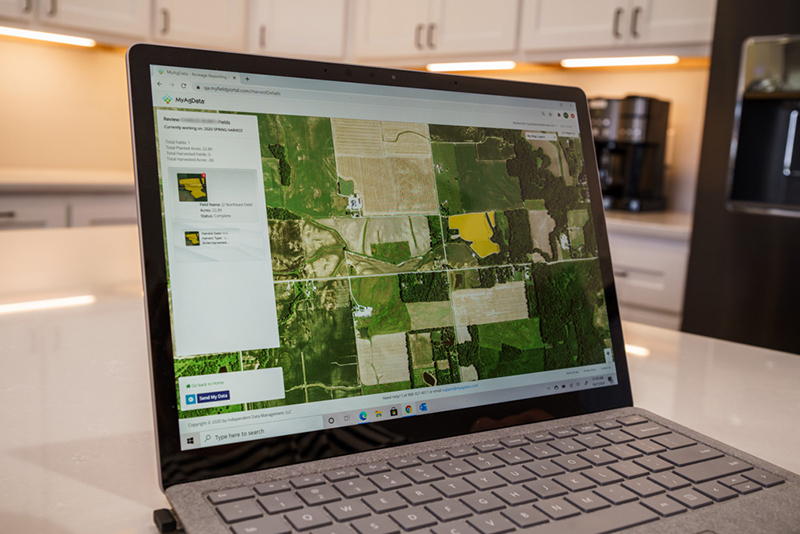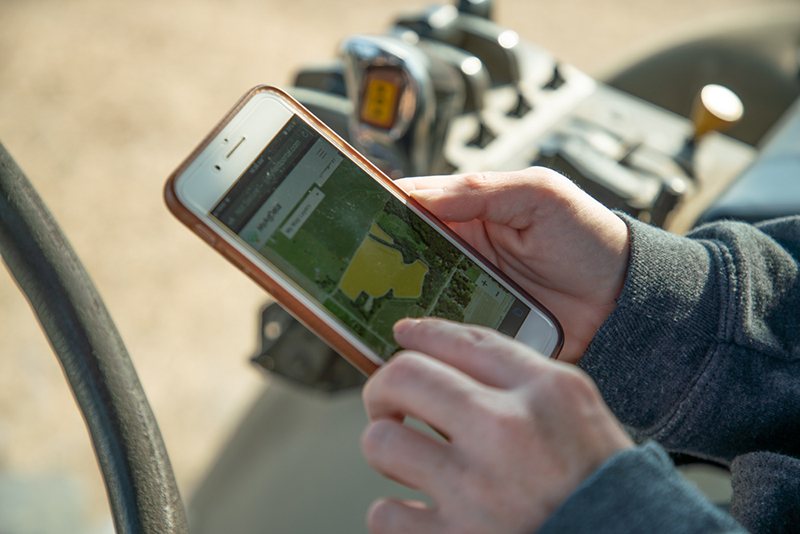Digital Acreage Reporting is Here—Are You Ready?
For those who haven’t followed the developments closely, the idea of electronic acreage reporting first began when Congress authorized the digital collection of acreage data in the 2008 Farm Bill. When the project never came to be, third-party electronic acreage reporting was reauthorized in 2012, and again in every Farm Bill since. Thirteen years and a global pandemic later, digital reporting has become more relevant and necessary than ever before.
Growers interested in pursuing electronic acreage reporting will soon have access to a data system that’s already been tested and verified through pilot programs. The precision farming and crop insurance experts behind MyAgData, a cloud-based tool that simplifies acreage and production reporting, have been working alongside the USDA to streamline this process since 2014.

MyAgData CEO Martin Barbre, somewhere in southern Illinois.
“We were ready to report electronically as soon as the USDA said, ‘go,’” says Deb Casurella, MyAgData’s Chief Operating Officer. “We’re the only third party that has been working with the USDA to help them understand and accept geospatial data—data that is different from anything they’d ever received before.”
Using Existing Technology to Streamline Acreage Reporting
If this sounds complicated, think of MyAgData as the TurboTax® of acreage reporting. TurboTax makes it easy for people to electronically report their taxable income to the IRS; MyAgData does the same for farmers who need to collect and transmit their production data to the USDA for Farm Programs and crop insurance.
“MyAgData allows producers to electronically report the acres they plant from their home office, their farm, or their field,” Casurella says. “It’s pretty simple that way. We use precision ag data. We use electronic field boundaries. We use whatever technology the grower has on their farm, even if it’s just selecting fields on a map.”

MyAgData® FieldPortal can use planted boundaries, operational boundaries, point-and-click or FSA data to identify a farmer’s fields.
This saves time and money, and in the era of COVID-19, it eliminates the need for users to leave the farm. The convenience factor is particularly appealing as well. Martin Barbre, MyAgData’s Chief Executive Officer and former Administrator of USDA’s Risk Management Agency, says reporting for his family’s 6,000-acre farm meant reviewing stacks of maps and files, updating which crops went in the ground in each field. New maps are printed each year, adding unnecessary time and expense to the entire reporting process.
That’s not to mention the increased propensity for human error. Farmers must work with FSA program technician to verify the acreage reporting, but they will also send that same data to a crop insurance agent in order to assist with loan applications and the lending process. Three people handling the same reports is often a recipe for inaccuracy.
“There are too many hands in the pot,” Barbre says. “Any time humans are writing and keying things in manually, there are bound to be mistakes. The bottom line is that it’s time to do this electronically.”
And growers aren’t the only ones who benefit from MyAgData. Ag retailers and other service providers can use it, too. Because more than 2.5 million acreage reports are filed annually, businesses and trusted advisors who offer this digital solution to their customers create a ton of value.
“MyAgData is a great way to deepen existing customer relationships or get a foot in the door with new customers,” Barbre says. “Inevitably, somebody is going to be talking to your customers about electronic acreage reporting. You’re going to want to make sure it’s you.”
Digital Reporting in the Digital Age
With MyAgData, producers use their smartphone, tablet, or desktop computer to create an account. From there, they can either upload the precision ag data, connect to one of the manufacturer cloud systems where their data is stored, or use the data coming directly from a farm machine. This starts the reporting process. Producers then identify what they planted on a field-by-field basis.

Responsive design ensures MyAgData® FieldPortal can be used on nearly any device.
While some specialty and perennial crops will not yet be accepted by the USDA when the program launched, most crops can be reported. And there are other benefits to digital reporting, too. Eventually, this data can be leveraged for capturing carbon sequestration or anything else that requires producers to submit quality agriculture data in a standardized electronic format. Producers would do well to embrace the future-looking capabilities of this technology. Acreage reporting is just the beginning.
“It’s the state of technology on the farm and in the field to be able to leverage the data producers collect electronically,” Casurella says. “There’s no reason in this day and age to go from data on the farm to paper maps for government programs.”